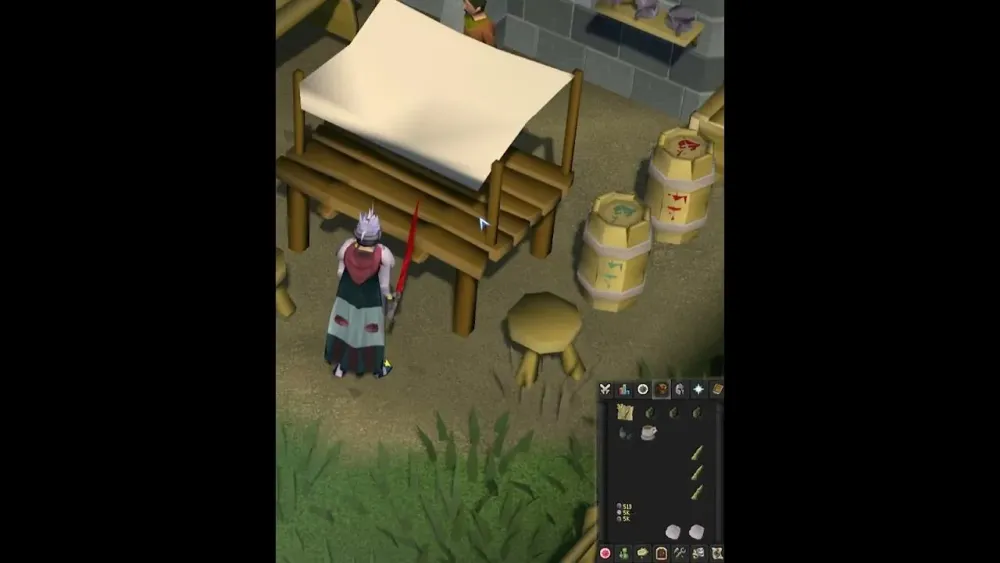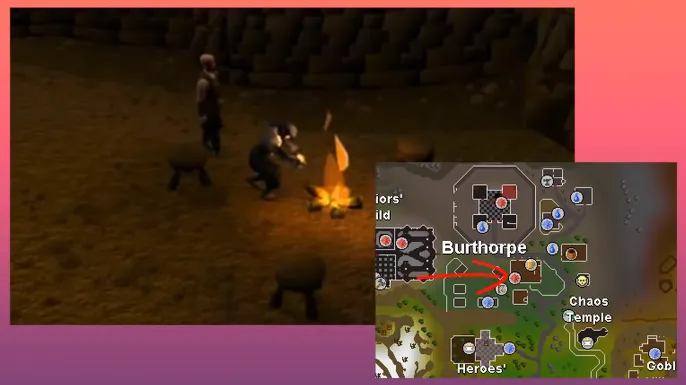Your cart is empty
Cost Efficient Food in OSRS A Guide to Saving Gold While Healing

In Old School RuneScape (OSRS), food is essential for surviving combat, whether you’re slaying monsters, tackling bosses, or training your combat skills. However, constantly buying expensive food like sharks can drain your gold reserves fast. This guide explores cost-efficient food options in OSRS, helping you maximize healing while minimizing costs. Whether you’re a free-to-play (F2P) player or a member, we’ll cover affordable foods, their healing properties, and strategies to stretch your budget further.
Food in OSRS restores hitpoints (HP), keeping you alive during tough encounters. But with prices fluctuating on the Grand Exchange, choosing the right food can make or break your bank. Expensive foods like anglerfish or manta rays heal more but aren’t always necessary for everyday tasks. By opting for cost-efficient alternatives, you can save gold for gear upgrades, skills, or other investments. This section breaks down why affordability matters and how to balance healing with cost.
Balancing Cost and Healing Effectiveness
When selecting food, consider two factors: healing per bite and cost per hitpoint restored. For example, tuna heals 10 HP and costs around 50 coins, while sharks heal 20 HP but cost ~900 coins. Tuna is often more cost-efficient for low-to-mid-level tasks, as you get more healing per coin spent. Always weigh the task’s difficulty against your budget to avoid overspending.
Avoiding Overpriced Food Traps
Popular foods like sharks or monkfish are often overused because of their high healing. However, their prices don’t always justify the benefits for casual slaying or training. Less glamorous options, like lobsters or pizzas, can be just as effective for many scenarios, leaving you with more gold for other priorities.
Best Cost-Efficient Foods for F2P Players

Free-to-play players have fewer food options, but there are still plenty of affordable choices that pack a punch. These foods are accessible through fishing, cooking, or the Grand Exchange, making them ideal for F2P adventurers on a budget.
Tuna: The F2P Staple
Tuna heals 10 HP and typically costs 40-50 coins on the Grand Exchange. It’s perfect for low-level combat training or slayer tasks where you don’t take heavy damage. You can fish tuna at level 35 Fishing, making it a self-sustaining option if you’re willing to skill.
Lobster: A Step Up
Lobsters heal 12 HP and cost around 150-200 coins. They’re a great middle-ground for F2P players tackling tougher foes like hill giants or moss giants. Fishing lobsters at level 40 Fishing is slower but saves you from buying them outright.
Swordfish: High Healing for Tough Fights
Swordfish heal 14 HP, the highest for F2P, and cost ~300-350 coins. They’re best reserved for challenging content like the Stronghold of Security or PKing. At 50 Fishing, you can catch them yourself, though it’s time-intensive compared to buying.
- Tuna: 10 HP, ~50 coins, great for low-level tasks.
- Lobster: 12 HP, ~150 coins, ideal for mid-level combat.
- Swordfish: 14 HP, ~300 coins, best for high-damage fights.
Top Cost-Efficient Foods for Members

Members have access to a wider variety of foods, many of which offer excellent value for gold. From fish to cooked dishes, these options cater to different combat scenarios while keeping costs low.
Monkfish: The Budget Shark Alternative
Monkfish heal 16 HP and cost around 400-450 coins, making them nearly as effective as sharks (20 HP, ~900 coins) at half the price. They’re ideal for mid-to-high-level slayer tasks or bossing on a budget. You can fish monkfish after completing Swan Song, requiring 62 Fishing.
Pineapple Pizza: High Healing, Low Cost
Pineapple pizza heals 22 HP over two bites (11 HP each) and costs ~600-700 coins. At roughly 30 coins per HP, it’s one of the cheapest high-healing foods for members. You’ll need 65 Cooking to make it, but buying from the Grand Exchange is often easier.
Tuna Potato: Endgame Healing on a Budget
Tuna potatoes heal 22 HP and cost around 800-900 coins. They’re cheaper than manta rays or dark crabs (also 22 HP) and easier to obtain, requiring 68 Cooking to prepare. These are perfect for prolonged boss fights or raids where inventory space matters.
Basket of Strawberries: Inventory Efficiency
A basket of strawberries holds five strawberries, each healing up to 6 HP (total 30 HP per basket), and costs ~600 coins. At 20 coins per HP, they’re a steal for members, especially for tasks where you need to maximize inventory slots. You can grow strawberries with 31 Farming or buy baskets directly.
| Food | Healing (HP) | Approx. Cost (Coins) | Cost per HP (Coins) |
|---|---|---|---|
| Monkfish | 16 | 400 | 25 |
| Pineapple Pizza | 22 (11×2) | 650 | 30 |
| Tuna Potato | 22 | 850 | 39 |
| Basket of Strawberries | 30 (6×5) | 600 | 20 |
Strategies to Save Gold on Food
Beyond choosing cheap foods, there are ways to reduce your reliance on food altogether or make your own to cut costs. These strategies can help both F2P and members save gold in the long run.
Fish and Cook Your Own Food
Fishing and Cooking are accessible skills that let you produce your own food. For F2P, focus on tuna or lobsters; for members, monkfish or karambwans are great. This requires time but eliminates Grand Exchange costs. Aim for at least 50-60 Cooking to avoid burning fish, maximizing your yield.
Use Combo Eating for Efficiency
Combo eating involves pairing standard foods (3-tick delay) with fast foods like karambwans (1-tick delay) to heal quickly in combat. For example, eating a monkfish (16 HP) and a karambwan (18 HP) together heals 34 HP in one cycle, saving inventory space and time. Karambwans cost ~400 coins and require 65 Cooking, but they’re a game-changer for tough fights.
Leverage Healing Mechanics
Items like the Regen Bracelet or Bonecrusher (with prayer) provide passive healing, reducing food consumption. Members can also use Guthan’s armor for healing during slayer tasks or pray at the Elidinis Statuette in Nardah for full HP restoration. These methods cut down on food costs for long sessions.
- Fish and Cook: Save gold by skilling, e.g., fishing monkfish or lobsters.
- Combo Eating: Pair monkfish with karambwans for fast, high healing.
- Passive Healing: Use Regen Bracelet or Guthan’s to minimize food use.
When to Splurge on Expensive Food
While cost efficiency is key, there are times when pricier foods are worth the investment. Knowing when to splurge can optimize your performance without wasting gold.
High-Stakes Bossing and Raids
For endgame content like the Theatre of Blood or Chambers of Xeric, foods like anglerfish (up to 22 HP, ~1,500 coins) or saradomin brews (15% HP + stat boosts, ~3,000 coins) are justified. Their high healing and special effects can mean the difference between success and failure.
PvP and Wilderness Activities
In PvP or Wilderness slayer, fast healing is critical. Karambwans or anglerfish paired with combo eating ensure you stay alive under pressure. The extra cost is worth it to avoid losing valuable loot or dying to PKers.
Ironman Accounts
Ironmen can’t rely on the Grand Exchange, so they often cook high-healing foods like tuna potatoes or fish themselves. Investing time in skilling for these foods saves gold and aligns with the self-sufficient playstyle.
Pro Tip: For most slayer tasks or mid-level content, stick to monkfish or pineapple pizza. Reserve anglerfish or brews for situations where every hitpoint counts.
Choosing cost-efficient food in OSRS is about understanding your needs and the task at hand. F2P players can thrive with tuna or lobsters, while members have access to monkfish, pineapple pizza, and strawberries for excellent value. By fishing your own food, using combo eating, or leveraging healing mechanics, you can stretch your gold even further. Save the expensive stuff for high-stakes moments, and you’ll have plenty of coins left for that next big purchase. Happy adventuring in Gielinor!
